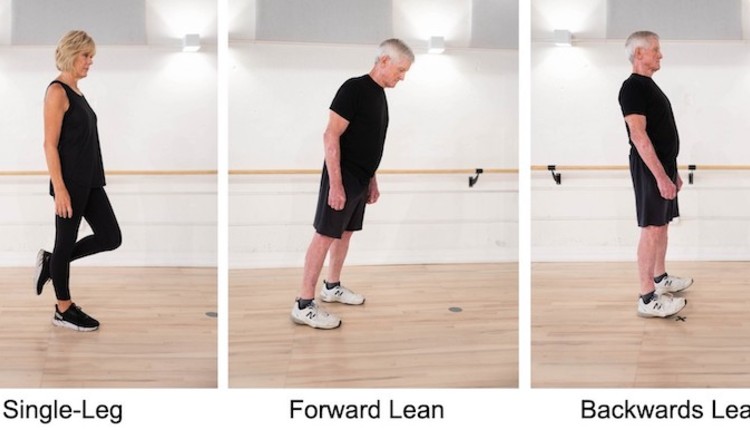
Understanding the variables and differences of female and male biomechanics are imperative to differentiate training and programming. One of the most common variables overlooked by fitness professionals is that of the female pelvis and pelvic floor. One in three females will experience some form of pelvic floor dysfunction. (4) To provide female specific training, every movement professional needs to understand the most common forms of pelvic floor dysfunction.
Understanding the Pelvic Core Neuromuscular System (PCNS)
The female pelvis is wider, shallower and more circular than the male pelvis. The female pubic arch is wider as opposed to the v-shaped male pubic arch. The female pelvis is also oriented, to a greater extent, in an anterior tilt as compared to the male pelvis. This characteristic provides a foundational support to the female pelvic bowl organs. The female pelvic bowl organs include the bladder, the uterus and the bowels. The orientation of the female pelvis provides skeletal support to these organs, which allows for a stacking mechanism. The bladder stacks on the inner side of the pubic arch, the uterus; in most cases, stacks on top of the bladder and the sigmoid colon stacks against the uterus. These organs are also fascially-connected which provides another level of support.
The pelvic floor muscles provide muscular support to the bottom of the Pelvic Core Neuromuscular System (PCNS). The PCNS is made up of the respiratory diaphragm at the top, the abdominal muscles at the front and sides of the trunk, the back and hip muscles at the back and sides of the trunk and the very important pelvic floor muscles at the bottom. All of these muscles are fascially-connected and must work as an integrated unit to maintain continence, provide core stability/mobility and lower girdle mobility/stability. The pelvic nerves are also part of this system and when working properly provide a symphony of appropriate communication for efficient female biomechanics. In Applied Functional Science (AFS), as taught by the Gray Institute, the concept of a Kegel or an isolated pelvic floor muscle contraction is challenged. In AFS, PCNS function would include assessment of the shoulders, the thoracic spine, the hips, the subtalar joints and how intra-abdominal pressure is managed. This global assessment will then allow for a better understanding of how the local aspects of the PCNS are functioning.
Common types of PCNS dysfunction
Are you working with a female who has Pelvic Core Neuromuscular System Dysfunction? As a fitness professional, it is important to know the most common forms of female PCNS Dysfunction and the right questions to ask a client. The four most common forms of dysfunction include urinary incontinence, fecal/gas incontinence, pelvic organ prolapse and pelvic pain. (2) Orthopedic Deficits may also be influenced by PCNS dysfunction. (1) This may include Diastasis Rectus Abdominis (DRA), anterior cruciate ligament injury, ankle sprains, hip labrum injuries and low back pain. An effective screening will include questions to reveal dysfunction.
Pelvic pain presents in a variety of forms. All of these types of PCNS Dysfunctions will impact a females’ ability to participate in exercise affirming why fitness professionals need to have an understanding of the dysfunction and implications for training. (4) Urinary Incontinence may present in a variety of forms. Stress incontinence is defined as the involuntary loss of urine with an increase in intra-abdominal pressure. This may occur with sneezing, coughing, lifting and high-impact exercise. Urge incontinence is defined as an excessive urge to urinate with a small production of urine. Urinary frequency is defined as urinating more that 8-12 times in a 24-hour period. Normal bladder emptying should occur every 2-4 hours during the day and 0-1 time at night. No amount of urinary leakage should ever be considered normal. If urinary leakage occurs, it means a breakdown in the Pelvic Core Neuromuscular System has occurred and this needs to be addressed. Fecal/gas incontinence is defined as loss of bowel control or the ability to control gas. Individual bowel patterns and motility will vary and is dependent on a number of digestive health factors. However, loss of control is never considered normal and an individual should never have to strain or feel like they cannot completely empty their bowels. Pelvic organ prolapse (POP) symptoms may include the sensation of pelvic pressure and heaviness. POP occurs when a pelvic bowl organ descends downward towards the pelvic floor or even outside of the pelvic floor openings. A cystocele is when the bladder descends and bulges into anterior vaginal wall deficits. Uterine prolapse is when the uterus descends down into the vagina. A rectocele is when the rectum bulges into posterior vaginal wall deficits and/or through the anus. (3)
Women’s health allies
To better serve the female population, attend education that provides female-specific training, utilize a screening that includes female-specific questions and join forces with health professionals that work with the female population. Research the health professionals in your region to build relationships. The following list includes health professionals who have specialized skills in working with the female population:
Women’s Health Physical Therapist: a physical therapist who has specialized education and skills in the care of the female patient. Areas of focus include pelvic floor dysfunction, pregnancy and care throughout the fourth trimester.
Gynecologist: a physician who has completed training and education in the health of the female reproductive system for health/wellness and dysfunction.
Obstetrician: a physician who has completed education and training in the management of pregnancy, labor and the fourth trimester.
Obstetrician/Gynecologist: a physician who has completed education and training to provide medical and surgical care with an expertise in pregnancy, childbirth and dysfunction of the female reproductive system. Preventative care, perinatal care, with family planning are included.
Urogynecologist: a physician that has completed specialized education and training in care of the female with pelvic floor dysfunction. This physician has completed medical school and a four-year residency in obstetrics and gynecology. This professional also has additional training in the evaluation and care for conditions that affect the female pelvic organs, muscles and connective tissue that support the female pelvic bowl organs.
Fellow of Applied Functional Science: a physical therapist, personal trainer, fitness professional, chiropractor, osteopath or MD who has specialized training in applied functional science with an understanding of chain reaction biomechanics. This professional will also be certified in 3DMAPS and CAFS which includes assessment, training, prevention, rehabilitation and sports performance enhancement skills.
As a fitness professional, you may be the first person that addresses this information with your client. Female-specific education is crucial to the understanding of Female Chain Reaction Biomechanics. Implementing the knowledge for your female clients will elevate the level of training and exercise prescription to better serve the female population. This is quality of life changing information.















